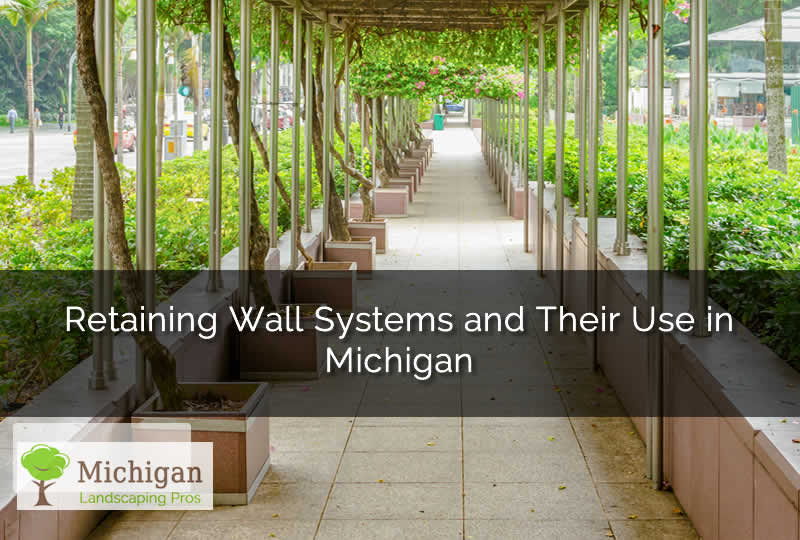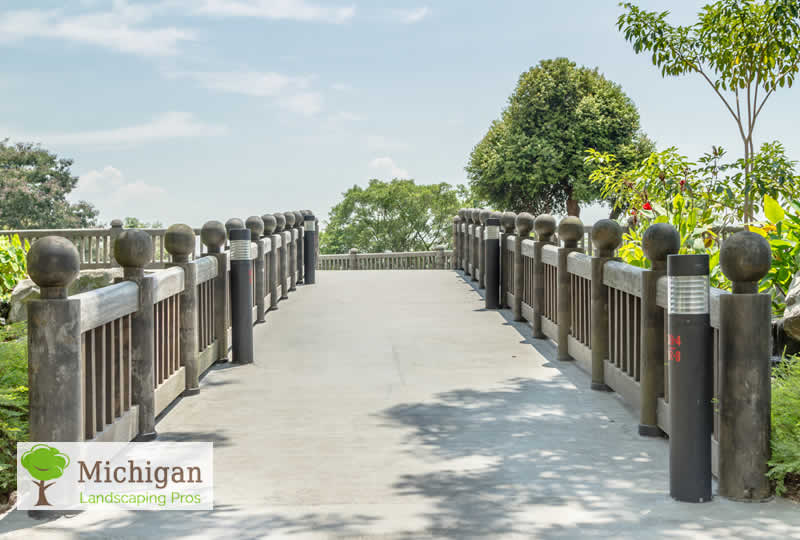Retaining Wall Systems and Their Use in Michigan
Sometimes when you need to add depth to your yard the best way is by adding retaining wall systems to it. For lawns with landscapes that are not level using a retaining wall system is a must. The walls allow a home owner to keep the landscape level and hold back areas of ground that are not level. Many times retaining wall systems are used near water fronts as they can hold back areas that are above the water line. In this article I’ll discuss the popular forms of retaining wall systems and their use in Michigan and surrounding areas.
Retaining Wall Systems and Their Use in Michigan
Using a retaining wall means you have an area of your landscape that is not level. Home owners use a retaining wall when they want parts of the landscape level and a retaining wall allows for a step down of the landscape. If you’re using a retaining wall then chances are your landscape isn’t level and a retaining wall system is needed. I’ll go over the most popular types of retaining wall systems in Michigan below:

Gravity Walls
Gravity walls are the most popular retaining wall system in Michigan. Since most of the land in Michigan is relatively flat there is not a need for extreme retaining wall systems that are in use in states like Colorado. Most gravity walls are only a few feet high and do not exceed 4 feet high. They are made by using a large base which gets smaller as it gets higher. Usually gravity walls are leaning against the force they are trying to hold back such as a hillside. Gravity walls are also popular in gardens when depth is needed for walkways and such.
Cantilever Retaining Walls
For taller slopes a cantilever wall may be installed to hold back the soil. Cantilever walls are usually uniform all the way up unlike gravity walls. They do have a base that is connected which gives it a cantilever hence the name. They can be as much as 12 feet high or higher but typically in Michigan the average height is much less. Cantilever retaining walls are used around water ways and such where huge drops in elevation are present.
Sheet Pile Retaining Walls
If the soil you’re preparing the retaining wall for is weak and doesn’t hold together good you will likely need a sheet pile retaining wall. A sheet pile retaining wall is actually a pile that is inserted into the ground lower than the grade of the soil. Sometimes as much as 60% or the pile is below the lowest grade of soil making it much stronger.
Anchored Retaining Walls
Retaining wall systems in Michigan that need to be tied into anchors is called anchored retaining wall systems. They typically work by burying large anchors in the soil and then connecting them with the main retaining wall using cables or chains. anchors are usually buried 10 or more feet from the retaining wall and connected using cables that are run underground to the wall to support it. Seawalls are a prime example of how an anchored retaining wall works.
Counterfort Retaining Walls
The last type of retaining wall system used in Michigan is the counterfort retaining wall. Although it’s not that popular I decided to include it here just to demonstrate it’s effectiveness. It works much like the cantilever retaining wall system but it has a very distinctive difference. It also has thin vertical counterforts installed at regular intervals to better support the wall. This added structural support helps to keep the wall more secure even when more of a load is placed upon it.
Retaining Walls in Michigan Needs
Most homes in the Michigan area don’t need retaining wall systems unless they are beside water. But adding depth and character to a landscape in Michigan is much easier when using a retaining wall. It allows the home owner to break up areas which may seem to go on and on. It also allows for stone work to be placed in and around the landscape which make it appear larger. Stone patios and walkways can also benefit from retaining wall systems in Michigan with the stone work that they can add to a garden.
